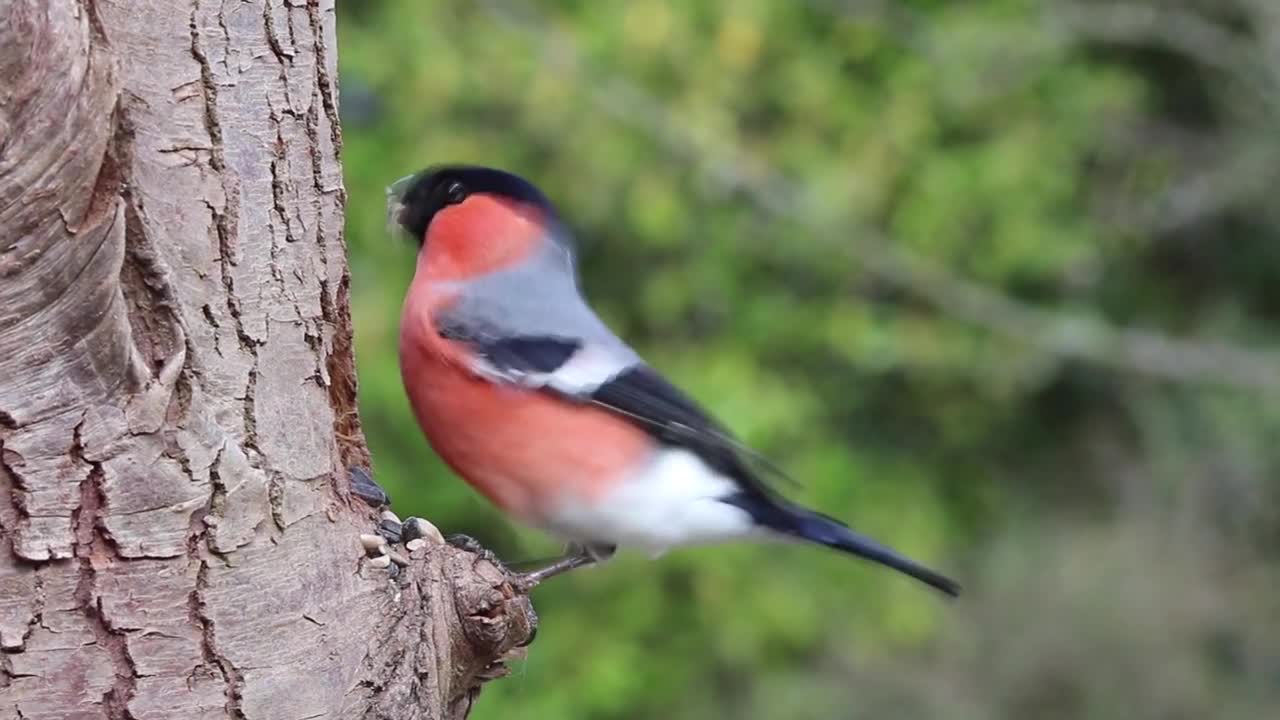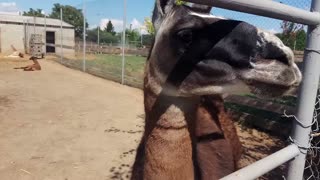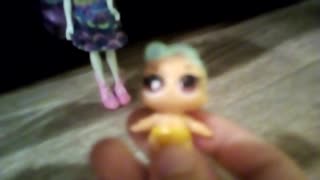Premium Only Content

Bullfinches are a genus of passerine birds in the finch family Fringillidae
They belong to the genus Pyrrhula.
The genus has a palearctic distribution. All species occur in Asia with two species exclusively in the Himalayas and one species, P. pyrrhula, also occurring in Europe. The Azores bullfinch (P. murina) is a critically endangered species (about 120 pairs remaining), occurring only in the east of the island of São Miguel in the Azores archipelago.
Analysis of the mitochondrial DNA cytochrome b sequence indicates that the holarctic pine grosbeak (Pinicola enucleator) is the sister group to the ancestor of the bullfinches.
The evolution of the bullfinch species started soon after the pine grosbeak's ancestors diverged from them (at the end of the middle Miocene, about a dozen million years ago (mya). It is fairly certain is that the bullfinch radiation started in the general area of the Himalayas. The mountain finches also seem to be part of this clade.
Bullfinches have glossy black wings and tail feathers. They show a white rump. The legs and feet are fleshy brown. Their short, swollen bill is adapted to eat buds, and is black except in P. nipalensis, which has a yellowish bill. The males can be distinguished by their orange or red breast. Some species have a black cap.
Probably most populations are partially migratory. Most migrants move short or medium distances. North European birds move within a wider compass than central European birds. Numbers migrating show marked annual fluctuations; no link with any particular food source has been established. Autumn migration begins late, and is fairly brief, mostly October–November; spring migration February–April.
The Eurasian bullfinch population in Britain has been in serious decline since the mid-1970s; numbers have fallen by 62 per cent in 35 years. Data suggests that productivity has increased over the last decade, and nest failure rates at the chick stage (15 days) have fallen from 37% to 21%.
Tag: Bullfinch, passerine birds, passerine, birds, bird, Fringillidae,
-
 0:16
0:16
Tweetysweet
4 years ago $0.09 earnedFAMILY FAMILY 🌈
415 -
 0:54
0:54
Patrasche
5 years agoWhat A beautiful Day For Family Of Birds Gather
11 -
 1:02
1:02
ARMEN13
4 years ago $0.05 earnedPeacock family.
1601 -
 2:13
2:13
anithakotian143
4 years agoFamily goal
84 -
 0:17
0:17
LisaLisa87
4 years agoBig duck family
98 -
 0:08
0:08
koks4774
4 years ago $0.03 earnedAlpaca family
1861 -
 0:40
0:40
talks23
5 years agoFamily outing
591 -
 6:18
6:18
Dark1209
5 years ago $0.01 earnedFamily lol
69 -
 10:14
10:14
AFV
5 years agoFamily Fails
193 -
 3:03
3:03
AFV
4 years agoWe Are Family
89